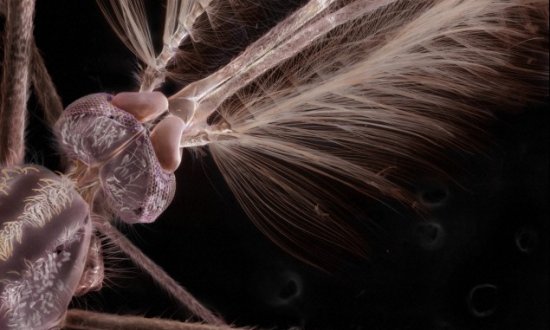Plasmodium vivax and drug resistance
Whilst our understanding of drug resistant Plasmodium falciparum is quite well understood, the extent and nature of resistance in Plasmodium vivax parasites is for the most part unknown.

Plasmodium vivax infects around 14 million people with malaria each year [1]. Most of these cases occur in the Asia Pacific region where more than 2.2 billion people are at risk of infection. Since 1960, only six countries in the Asia Pacific have been certified free from malaria: Taiwan (1965), Australia (1981), Singapore (1982), Brunei (1987), Maldives (2015), and Sri Lanka (2016).
Other areas are making major progress to reduce the burden of malaria. This is due to increased political commitment, better access to diagnostics, effective malaria treatments and bed nets. As a result, 22 countries in the Asia Pacific have publicly stated their goal to eliminate malaria from the region by 2030.
Plasmodium vivax – a greater challenge to eliminate
P. vivax remains endemic in 51 countries across Central and South Americas, the Horn of Africa, Asia and the Pacific islands. In most areas it is co-endemic with P. falciparum, which has been the priority species to address for national malaria control programmes. Malaria related deaths are mostly attributable to the more pathogenic P. falciparum, but over the last decade these have declined, however there has been a consistent rise in the proportion of malaria cases due to P. vivax.
Several factors contribute to this differential impact. P. vivax can be difficult to detect since it usually circulates at low levels in the blood. It can be present and infectious to the mosquito vectors, even when the person shows no symptoms. Importantly, P. vivax can also lie dormant in a person’s liver, becoming active again weeks to months after the first infection to cause relapses of symptomatic malaria.
In many places, the usual chloroquine treatment is no longer effective because of drug resistant P. vivax [2]. This results in treatment failures and relapses. These recurrent episodes of P. vivax can cause severe anaemia that result in malnutrition, chronic illness, and even death [3-4]. The number of relapses and the frequency differ significantly by region. See the WWARN Primaquine Literature Review for more information.
Achieving the radical cure
The radical cure of vivax malaria requires a combination of drugs active against the blood stages of the parasite and the dormant liver stages. Primaquine is the only widely available antimalarial drug that targets the liver stages of the malaria lifecycle and thus able to reduce the risk of recurrent malaria (known as relapses) [5]. However, widespread use of primaquine is limited by glucose-6-phosphate dehydrogenase (G6PD) deficiency. This is one of the most common genetic conditions in people. It can be found in up to 40% of some populations. People with severe G6PD deficiency are at risk of their red blood cells rupturing.
Until recently, there have been a lack of available and reliable diagnostics to determine this enzyme deficiency, and this coupled with concerns over drug related haemolysis mean that healthcare providers are reluctant to prescribe primaquine and patients are unlikely to adhere to a full course of treatment. Those patients who are prescribed primaquine often adhere poorly to the prolonged 14 day regimen. Our inability to provide radical cure safely and effectively is one of the key factors undermining the control and elimination of the parasite.
Emerging strains of drug resistant Plasmodium vivax
Although drug resistance has forced most malaria endemic countries to abandon chloroquine treatment for P. falciparum malaria, chloroquine remains the first line treatment for P. vivax malaria. This strategy is now under threat from the emergence and spread of chloroquine resistant P. vivax [2, 6-7]. P. vivax has also developed drug resistance to sulfadoxine-pyrimethamine (SP) and potentially other antimalarial drugs such as mefloquine.
However, because it is difficult to diagnose resistant strains, strategies to detect and track drug resistant P. vivax are limited [8]. In this context it is vital to develop better tools to assess antimalarial efficacy and drug susceptibility so that emerging drug resistance can be tracked and novel treatment strategies explored.
For a comprehensive review of drug resistant P. vivax see the Chloroquine Resistant Plasmodium vivax Review.
Related websites:
-
For more information about P. vivax, see the vivaxmalaria.org information hub
- Malaria Atlas Project
- The Asia Pacific Malaria Elimination Network
References:
- Battle, KE, Lucas TCD, Nguyen M, Howes RE, Nandi AK, et al. (2019) Mapping the global endemicity and clinical burden of Plasmodium vivax, 2000-17: a spatial and temporal modelling study. Lancet 392: 334-343.
- Price RN, von Seidlein L, Valecha N, Nosten F, Baird JK, et al. (2014) Global extent of chloroquine-resistant Plasmodium vivax: a systematic review and meta-analysis. Lancet Infect Dis 14: 982-991.
- Anstey NM, Douglas NM, Poespoprodjo JR, Price RN (2012) Plasmodium vivax: clinical spectrum, risk factors and pathogenesis. Adv Parasitol 80: 151-201.
- Price RN, Tjitra E, Guerra CA, Yeung S, White NJ, et al. (2007) Vivax malaria: neglected and not benign. Am J Trop Med Hyg 77: 79-87.
- Commons, RJ, Simpson JA, Thriemer K, Humphreys GS, Abreha T, et al. (2018) The effect of chloroquine dose and primaquine on Plasmodium vivax recurrence: a WorldWide Antimalarial Resistance Network systematic review and individual patient pooled meta-analysis. Lancet Infect Dis 18: 1025-1034.
- Baird JK, Basri H, Purnomo, Bangs MJ, Subianto B, et al. (1991) Resistance to chloroquine by Plasmodium vivax in Irian Jaya, Indonesia. Am J Trop Med Hyg 44: 547-552.
- Price RN, Auburn S, Marfurt J, Cheng Q (2012) Phenotypic and genotypic characterisation of drug-resistant Plasmodium vivax. Trends Parasitol 28: 522-529.



